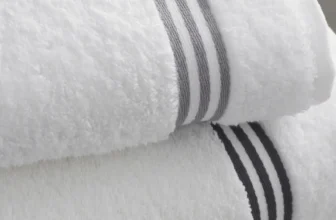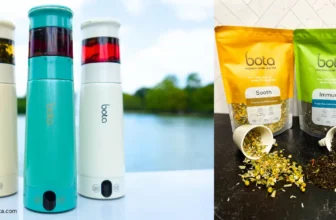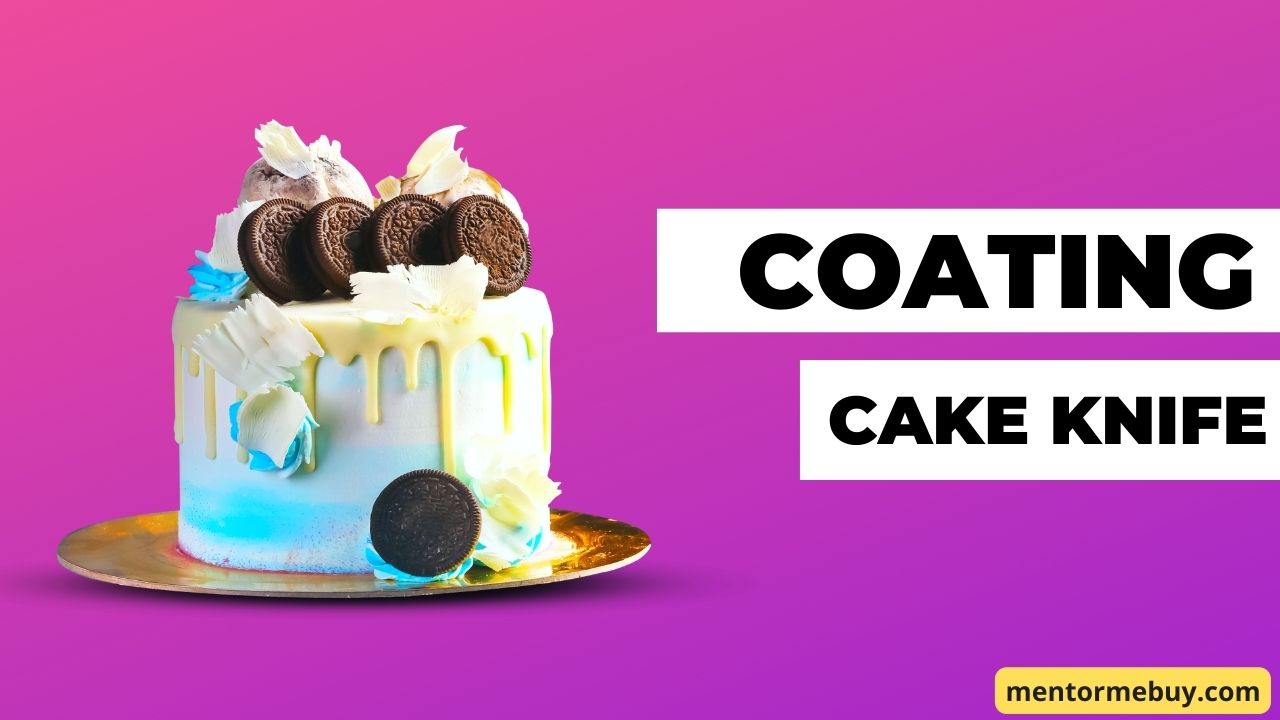
Have you ever tried to cut a cake with a dry knife? It’s not easy, and the knife tends to stick to the cake, making it hard to get clean, even slice.
That’s why it’s important to coat a cake knife with something before cutting it into the cake, which can be anything from butter to cooking spray to shortening.
The key is to use something that will create a barrier between the knife and the cake, making it easier to slice through the cake and resulting in cleaner, more even slices.
Besides, coating a knife allows you to add a decorative touch to your simple looking knife.
In this article, we will learn about coating a cake knife, its advantages, and a step-by-step procedure explaining how to apply a coating on a birthday cake knife.
Why do you need a cake knife?
A cake knife is usually smaller and has a serrated edge, making it ideal for slicing through the soft, delicate layers of cake.
They come in various sizes, so it is essential to choose one that is appropriate for the size of cake you will be cutting. A larger cake will require a larger cake knife, while a smaller cake will require a smaller knife.
The knife blade is stainless steel, which helps cut through the cake without crushing it. And The handle of a cake knife is typically made of plastic, wood, or metal.
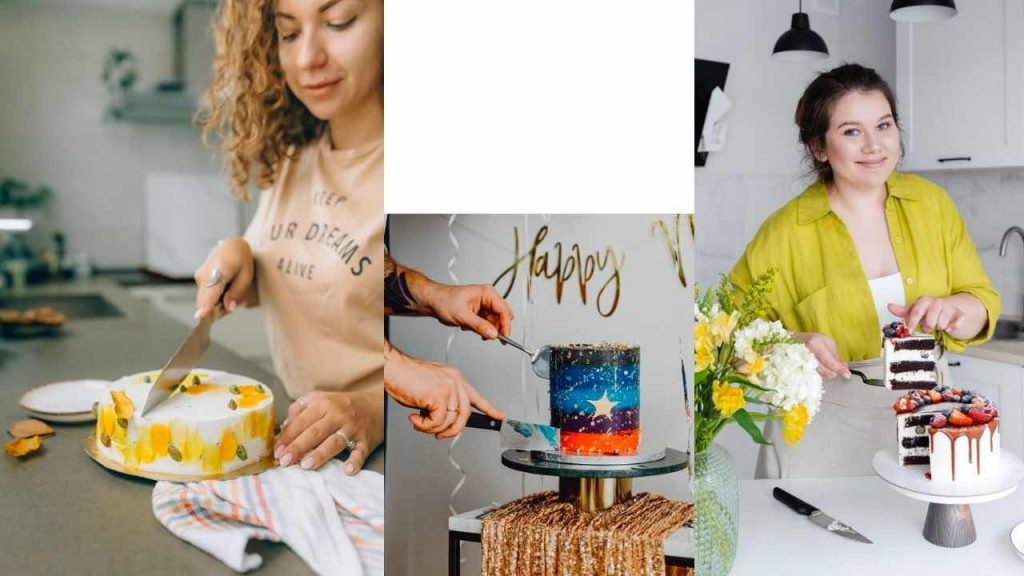
Cake knives are perfect for
- Presentation and portion control.
- Creating professional-looking cake
- Cutting and serving a cake
With so many benefits of cake knives, you also want to coat a cake knife to use it more efficiently; This will prevent sticking or even provide an excellent option to decorate your cake cutting knife.
What are the benefits of using a coating over a cake knife?
A coating on a cake knife can provide several benefits.
- Provide a non-stick surface, which can be helpful when slicing and serving a sticky or soft cake.
- Make it more durable and resistant to wear and tear.
- Provide a decorative touch to the cake knife, making it visually appealing.
- Finally, Make the knife easier to clean.
Different ways of coating a cake knife
There are many ways to coat a cake knife, and the best method will depend on the ingredients you have on hand and the look you are going for.
Here are some of the different options to apply a coating over cake knives.
- Chocolate: One popular and delicious way to coat a cake knife is to dip the knife in melted chocolate. Otherwise, melt and pour over the blade, or spread on with a spatula. Once it hardens, it creates a smooth, shiny surface perfect for decorating and cutting a cake. Even If you don’t have chocolate, you can also use melted candy.
- Buttercream: Buttercream is a rich, creamy icing that is yet another perfect cake knife coating option. It can be spread on with a spatula or piping bag and can be easily flavored and colored to match your cake.
- Ganache: Ganache is a rich, chocolatey icing made from melted chocolate and cream. It is perfect for coating cake knives because it helps creates a smooth, glossy surface.
- Sugarpaste: Sugarpaste is a pliable, edible paste made from sugar and water, which is easy to mould and give shape, making it ideal for creating decorative designs on cake knives. It can also be tinted to match your cake.
- Fondant: Fondant is a popular choice for coating cake knives because it provides a smooth, sleek surface which is perfect for decorating. It can be rolled out and draped over the knife’s blade or cut into strips and applied directly to the blade.
- Royal icing: Royal icing is another popular choice for coating cake knives. It is a thick, sticky icing that dries hard, making it ideal for creating sharp edges and decorative designs. It can be piped onto the knife’s blade or spread on with a spatula.
- Edible Glaze: A glaze is a thin, transparent icing that can be brushed or sprayed onto cake knives. It dries hard, creating a smooth, shiny surface that is perfect for decorating.
- Frosting: Frosting is a thick, creamy icing perfect for coating cake knives. It can be spread on with a spatula or piping bag and can be easily flavored and colored to match your cake.
- Icing sugar: Icing sugar is a fine, powdery sugar perfect for dusting cake knives. It can be applied with a brush or sifted over the knife’s blade.
And lastly, If you are looking for a more natural option, you can coat the knife in a thin layer of butter, honey or syrup; This will give the cake a subtle sweetness and a beautiful shine.
These are a few different ways that you can use to coat a cake knife. Try experimenting with different coatings until you find the one that works best for you.
Have fun and be creative!
How to do coating on a cake knife? | Step By Step guide
We have already seen different options of coating a cake cutting knife. Now, follow the below steps to get the perfectly coated cake knife:
Gather your supplies
First, you will need to gather all of your supplies to coat the cake knife. These supplies include:
- A cake knife
- A bowl or plate
- A spoon
- Spray or container of coating(chocolate, candy, or even frosting)
- Spatula or brush
- Pair of gloves
- Drop cloth
- Oven
- Parchment paper (Optional)
Setting up your Workplace
The main goal is to ensure you have all the ingredients and tools required to carry out an undisturbing knife coating process.
Apart from that, it would be best if you also prepared your knife by washing it with warm, soapy water. Rinse well and dry thoroughly. You can also use a damp cloth to clean your knife.
After that, Cover your work surface with the drop cloth and put on the gloves.
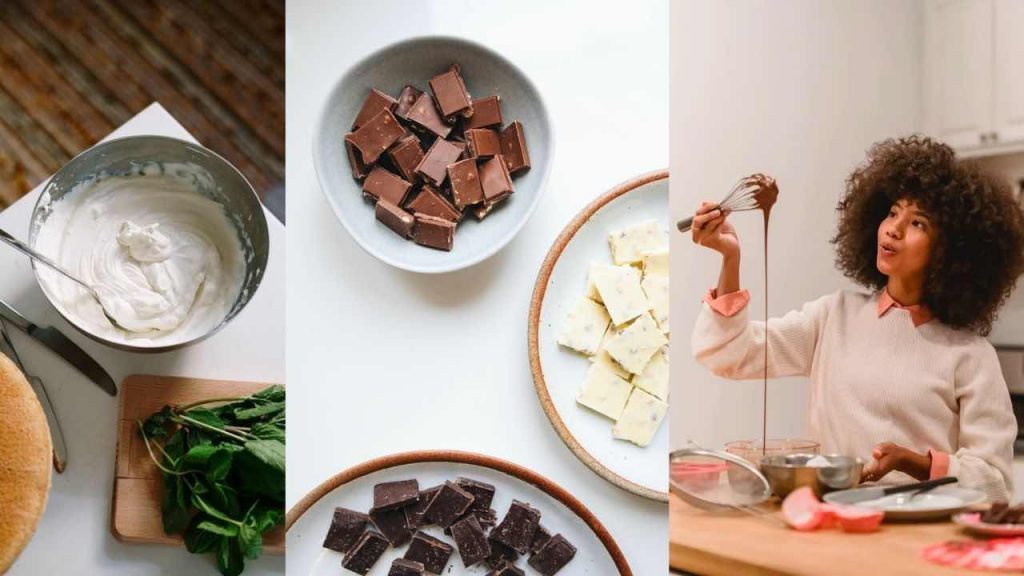
Apply the Coating
There are three ways you can apply the coating on a cake cutting knife. They are
- First is by pouring coating material on top of the knife or applying it evenly.
- Second, by dipping inside the coating material.
- And third, by spraying evenly across the cake knife.
Decide which method best suits you based on the coating material you are thinking of applying to the birthday cake knife.
Dipping or applying is best if you have a paste or solution of coating, such as melted chocolate, cream and sugar paste etc. Here you have to spread a thin layer of coating over the entire blade of the cake knife.
On the other hand, use spraying if you have a coating material inside a spray bottle.
Similarly, if the coating material is solid, put that in a microwave-safe bowl and melt it using a microwave oven. And if you want, you can preheat your cake cutting knife for a while using a microwave oven; this will help spread the coating more evenly and smoothly.
Let it dry
After you have coated your cake knife, you will need to set it aside so that the coating can harden. Once the coating is dry, your cake knife is ready to use!
You can use the cake knife to cut and serve your cake.
Conclusion
Coating a cake knife is a very simple process. Anyone with access to simple tools can efficiently perform coating on a birthday cake knife.
You perform coating for two reasons: to avoid sticking to the cake while cutting a cake with knife and another reason is to decorate and give an attractive look to your cake cutting knife.
There are many different substances that you can use to apply coating on your cake knife, and the best method depends on the ingredients you have available with you and the final look you are looking for.
FAQ
What is the difference between an ordinary and cake knife?
They also have wider, more blunt blades than other knives, which helps prevent them from tearing or smashing the cake.
On the other hand, ordinary knives are not designed specifically for cutting cakes and may not have the same features that make cake knives ideal for the task.
For example, ordinary knives may have sharper blades, which are perfect for cutting vegetables and fruits; and if you use them for cutting the cake, a knife can easily damage the cake layers.
What are common cake knife coating mistakes?
Applying the coating too thick: If you apply the coating too thick, it will be challenging to cut through the cake, and you will end up with a lot of wasted coating.
Not letting the coating set: Be sure to let the coating set before trying to cut the cake. Otherwise, the coating will slide right off the knife.
Why is a cake knife notched?
The notches on a cake knife also help to create even slices of cake. If you are cutting a round cake, the notches will help you to create even slices that are the same size. This is important if you are serving the cake to guests and you want everyone to get a fair share.
Overall, the notches on a cake knife serve two main purposes: to prevent squishing the cake, and to create even slices. These two factors make the cake knife an essential tool for anyone who loves to bake and decorate cakes.

